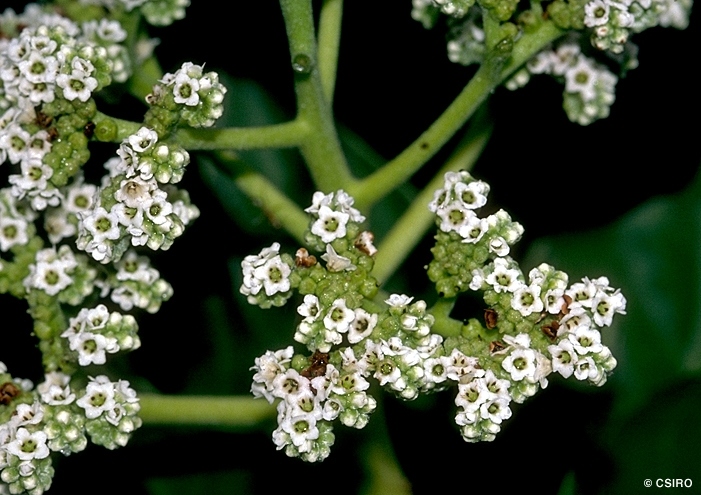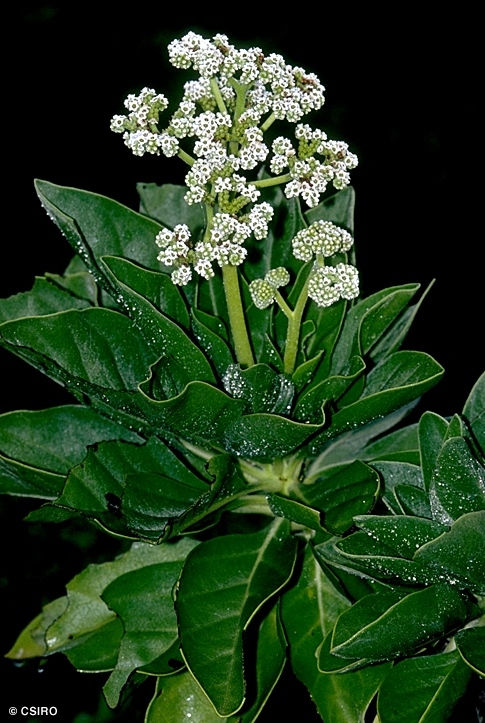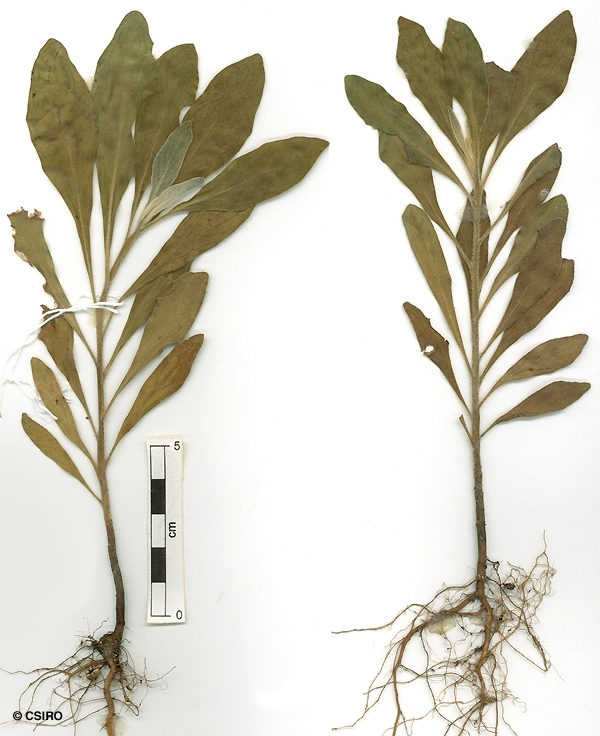Australian Tropical Rainforest Plants - Online edition
Heliotropium foertherianum Diane & Hilger






Hilger, H.H. & Diane,N. (2003) Bot. Jahrb. Syst. 125: 46.
Argusia
Usually grows into a shrub about 5 m tall but also flowers and fruits when about 2 m tall.
Flowers secund, i.e. all on one side of each inflorescence branch. Calyx about 2 mm long, very hairy on the outer surface. Corolla yellow towards the base but white in the upper half. Corolla tube about 2 mm long, lobes about 2 mm long. Pollen white. A fleshy ring usually visible on the style just below the stigmas.
Cotyledons ovate to spathulate, apex obtuse, base attenuate, petioles long. Cotyledon blade about 4-5 x 1.5-2 mm. At the tenth leaf stage: leaves +/- spathulate, apex obtuse or bluntly pointed, base attenuate. Both the upper and lower surfaces clothed in pale simple hairs. Seed germination time 28 days.
Occurs in NT, CYP, NEQ, CEQ and southwards to south eastern Queensland. Altitudinal range very small, usually found close to sea level. Grows in beach forest and strand vegetation on the mainland but seems to be more common on islands, particularly coral cays or islands with a lot of coral debris on the beaches. Also occurs in Africa, Mauritius, Sri Lanka, Malesia and the Pacific islands.
This species may have medicinal properties. It has been suggested that it may be of value in the treatment of ciguatera poisoning contracted from the consumption of reef fish.





